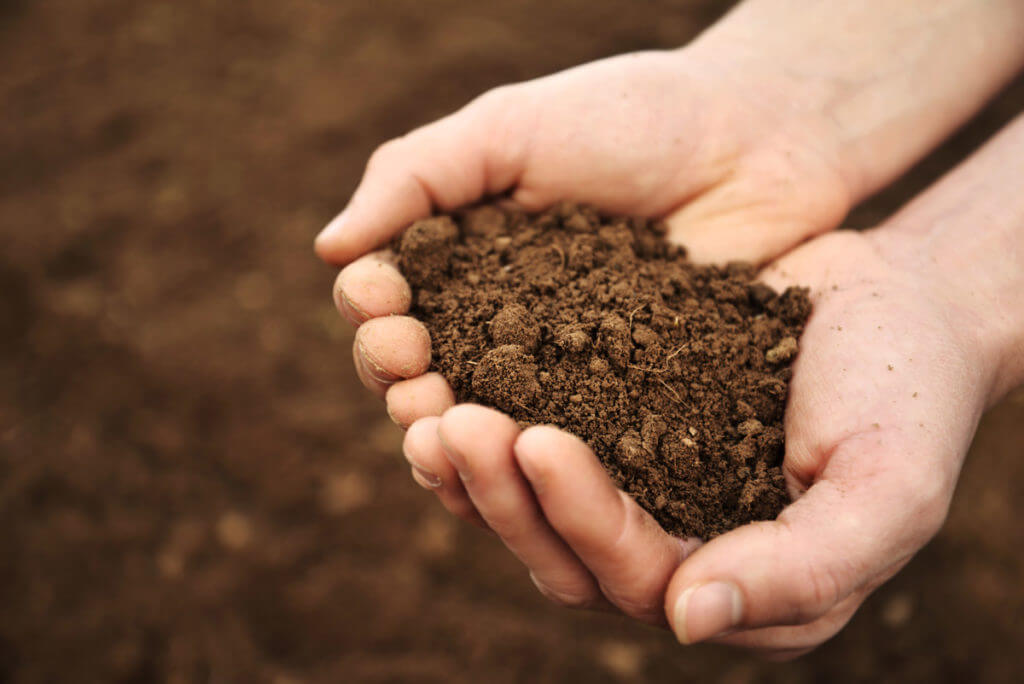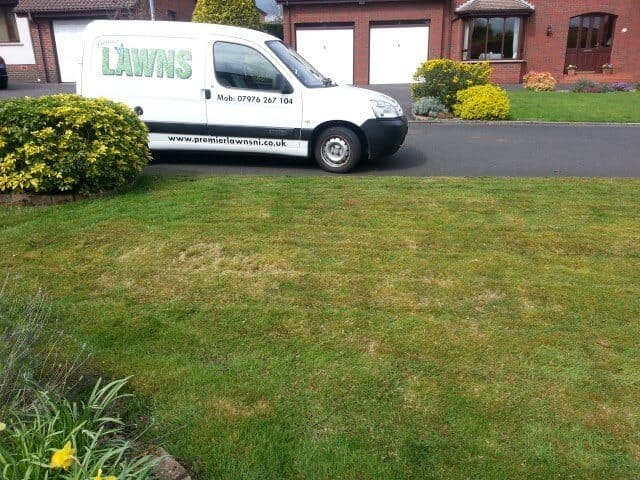Soil compaction is the root cause of many a lawn problem. Read on to discover how soil compaction affects your lawn and what you can do about it.
One teaspoonful of healthy soil contains more living organisms than there are people on earth. As well as mini beasts like worms and nematodes there are microscoptic plants, fungi and bacteria all working their little socks off to keep the planet in good condition. In fact, scientists believe, that without this biological diversity there’d be no terrestrial life on earth.
The soil beneath your feet really is like a miniature jungle. Millions of lifeforms densely packed into one finely tuned ecosystem. Together, they are constantly filtering and cleaning water, recycling waste and literally purifying the air that we breathe. And that’s before we start thinking about the way that all of the larger lifeforms (plants, food crops, animals, birds, me, you, your lawn) all depend on soil for survival.

What is soil compaction?
Bear with me for a moment. The easiest way for me to explain soil compaction is with an analogy.
The other day, my wife baked a lemon drizzle cake. She combined all of the ingredients and mixed them in such a way as to incorporate lots of air. When the cake came out of the oven, it had lots of air bubbles inside it which gave it a lovely texture. We could tell it would be super-easy to slice.
Next, Noleen poured over a lovely syrupy liquid full of flavours which soaked right into the cake and made it even more delicious. Now, without those air bubbles, that liquid could never have soaked through the cake as quickly as it did. Instead it would sit on the top and only flavour the top centimetre or two.
While the oven was hot, she also baked biscuits. A very different technique. Any air within the mixture was squished out by the rolling pin and the biscuits baked hard in the oven. (As they should – yum).
As you know, cutting a biscuit with a knife is difficult – it will shatter. The structure of the biscuit also means that it absorbs liquid slowly – which is, of course, why biccies are so good for dunking.
Why texture matters
The soil beneath your feet is a bit like a recipe. Lots of different ingredients and components all mixed up together to provide a home for the, soil microbes, mini beasts and plant roots that help make our lives so rich.
In an ideal world, the soil under your lawn should be more like a lemon drizzle cake than a biscuit. A biscuit is the culinary equivalent of compacted soil. It has very little air in it (all life forms need air) and the texture is nigh on impossible for roots to grow through it. Soil also needs to be efficient at absorbing rainwater – otherwise we’d all be flooded out. Especially in Ireland where there is no shortage or rain!
How does soil compaction affect your lawn?

Soil compaction has a big effect on the health and vitality of your lawn.
Drainage
Grass plants enjoy moist soil, but they hate to be waterlogged. Moss on the other hand, thrives in damp conditions. Better drained soil = healthier lawn with less moss.
Nutrition
Those billions of soil microbes living in the jungle beneath your feet, help to nourish the plants in your lawn. Some trap nitrogen from the air and turn it into plant food. Others recycle dead leaves etc to make plant nutrients. If your soil is compacted and unhealthy, the microbes struggle to do their job. In healthy soil, plant nutrients actually move around in the soil to position themselves where the plants’ roots can reach them.
Water
Drainage is great, but every single plant in your lawn, and every single organism living beneath it, needs water to survive. Compacted soil is like a biscuit, without air bubbles it’s difficult for water to penetrate it and therefore the entire population of your mini-jungle fails to thrive.
Growth
Roughly half of a grass plant is made up of the roots under the ground. Those roots need to be able to grow without restriction so that they can support the top half of the plant. In compacted soil, that’s pretty difficult for them to do.
Interestingly, the longer the grass, the longer the roots, which is why I recommend letting your grass grow longer in hot weather. It works the other way too – restricted roots = reduced leaf growth.
How will I know if my soil is compacted?
Sometimes its obvious when your lawn is struggling because of soil compaction. Heavy moss infestation is a very visible sign. Also, bare patches where the lawn has been heavily used. ….children’s play areas, beneath the linen line, the journey to the shed etc.
Other times it’s not so obvious. Perhaps the lawn just isn’t as green as it could be, despite having regular feeds and a careful mowing regime.
I have a quick and easy way to test for soil compaction.
Take a screwdriver (or something similar) with a 6” (15cm) blade and push it into your lawn. It should sink into the soil as easily as a knife cutting through lemon drizzle cake. If you need to push hard (like trying to cut a biscuit) then your lawn is compacted. The more effort you need to exert, the more compacted your soil is.
How to relieve soil compaction
Greenkeepers have a proven mechanical method to relive soil compaction. It’s called aeration. Aeration simply makes holes in the soil beneath your lawn so that air, water, microbes, roots and nutrients have the space to thrive.
I also like to use organic methods to improve soil health. By adding a careful balance of natural substances like humic acid and liquid seaweed treatments, I’m nourishing the creatures in the mini-jungle beneath your feet. When they are well nourished, they’ll keep moving around and as they do so, they create and maintain the spaces between soil particles. And as every designer knows, the spaces are just as important as the structures. —Just imagine trying to read this if there were no spaces betweenthewords.
Discover more about lawn aeration here.
How humic acid treatments benefit your lawn.
